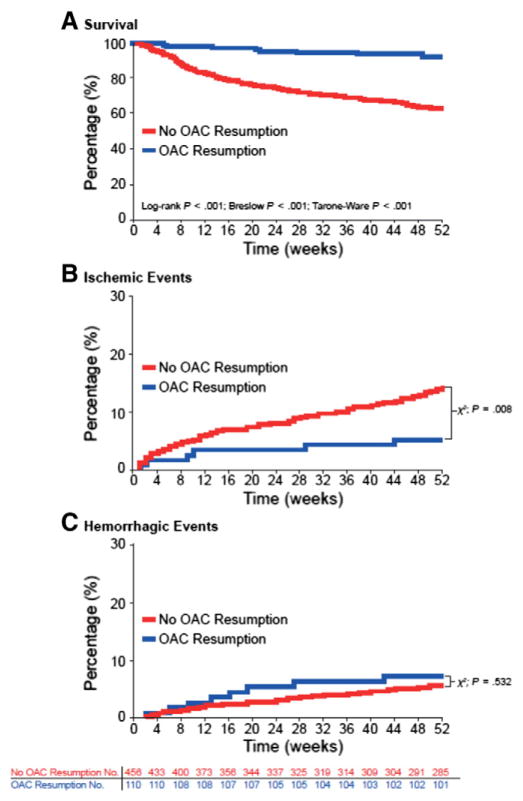Figure.
Unmatched survival and event rates in atrial fibrillation patients: analyzing oral anticoagulant resumption status. (Reproduced with permission from reference [27]) Unmatched Kaplan-Meier survival curves, ischemic, and hemorrhagic event rates in atrial fibrillation (AF) patients with and without oral anticoagulant (OAC) resumption. (A) Kaplan-Meier survival rates of patients with AF with and without OAC resumption from index-intracranial hemorrhage (ICH) until 1-year follow-up, analyzed by log-rank, Breslow, and Tarone–Ware testing, with corresponding P values. (B) Incidence rates of new ischemic events over the 1-year follow-up period in patients with and without OAC resumption. (C) Incidence rates of hemorrhagic events over the 1-year follow-up period in patients with and without OAC resumption. Numbers for patients at risk apply to parts A–C. One year after OAC-related ICH 8.2% (n = 9/110) of resumed patients vs 37.5% (n = 171/456) of patients without OAC resumption had died (P < .001). The crude incidence of bleeding events was not significantly different among AF patients with and without OAC resumption (OAC resumed: 7.3% [n = 8/110] vs 5.7% [n = 26/456] nonresumed patients; P = .532), the incidence of new ischemic events was significantly increased in patients without OAC resumption (5.4% [n = 6/110] vs 14.9% [n= 68/456]; P = .008).

